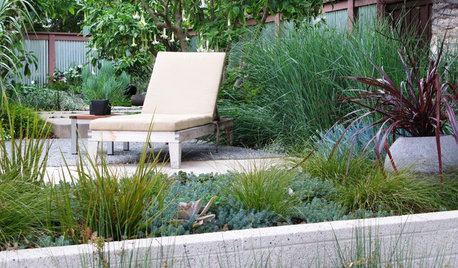Where do you get your seeds from?
momofsteelex3
10 years ago
Related Stories

CONTAINER GARDENS8 Easy Container Plants to Grow From Seed
Get beautiful blooms and herbs in summer by starting these choice garden picks from seed in spring
Full Story
GARDENING GUIDESSeeds or Seedlings? How to Get Your Garden Started
Growing delicious herbs and vegetables starts with knowing your goals and when you want to plant
Full Story
GARDENING GUIDESHow to Plant a New Lawn From Seed
Choose from more grass varieties and save money over sod by starting your lawn from seed
Full Story
MOST POPULAR16 Ways to Get More From Your Small Backyard
Make a tight or awkward yard a real destination with these design tricks from the pros
Full Story
KITCHEN DESIGNGet More From Your Kitchen Island
Display, storage, a room divider — make your kitchen island work harder for you with these examples as inspiration
Full Story
EVENTSSneak a Peek at Where the Pros Go to Get Inspired
At the 2015 Summer Las Vegas Market, thousands of retailers, designers and home pros will gather to discover the latest home decor trends
Full Story
ARCHITECTURERoots of Style: Where Did Your House Get Its Look?
Explore the role of architectural fashions in current designs through 5 home styles that bridge past and present
Full Story
LANDSCAPE DESIGNGet More From Your Garden by Mixing Things Up
Consider an eclectic outdoor style with defined hardscapes softened by exuberant, informal plantings
Full Story
LANDSCAPE DESIGNGet a Mediterranean-Style Garden Even Far From the Sea
Some lavender here, a water feature there, and your garden just might feel transported to a balmy seaside locale
Full StorySponsored
Custom Craftsmanship & Construction Solutions in Franklin County
More Discussions







Okiedawn OK Zone 7
momofsteelex3Original Author
Related Professionals
Middle Island Landscape Architects & Landscape Designers · Woburn Landscape Contractors · Danvers Landscape Contractors · Kerman Landscape Contractors · Lemoore Landscape Contractors · Lorain Landscape Contractors · Paramount Landscape Contractors · Pueblo West Landscape Contractors · Setauket-East Setauket Landscape Contractors · Baileys Crossroads Landscape Contractors · Dayton Decks, Patios & Outdoor Enclosures · Dearborn Decks, Patios & Outdoor Enclosures · Estero Decks, Patios & Outdoor Enclosures · Fort Pierce Decks, Patios & Outdoor Enclosures · Verde Village Decks, Patios & Outdoor EnclosuresLisa_H OK
borderokie
Lisa_H OK
susanlynne48
Okiedawn OK Zone 7
susanlynne48
momofsteelex3Original Author
Okiedawn OK Zone 7
momofsteelex3Original Author
susanlynne48
Okiedawn OK Zone 7
wbonesteel
momofsteelex3Original Author
wbonesteel
Lisa_H OK
susanlynne48
Okiedawn OK Zone 7
momofsteelex3Original Author
Lisa_H OK
Lisa_H OK
momofsteelex3Original Author
momofsteelex3Original Author
Okiedawn OK Zone 7
elkwc
momofsteelex3Original Author
Okiedawn OK Zone 7
momofsteelex3Original Author